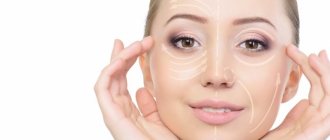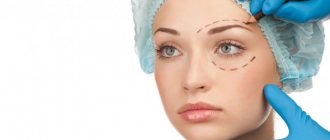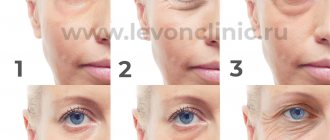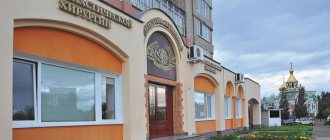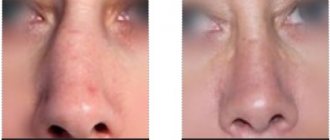Condylomas (a type of human papillomavirus infection) affect the skin and mucous membranes of the genital organs of men and women. Genital warts can be localized in the pubic area, labia majora and minora, vaginal opening, perineum, perianal zone, glans, foreskin and shaft of the penis, external opening of the urethra.
When the human papillomavirus (HPV) affects the cervix, the formation of cervical dysplasia with subsequent malignancy is possible.
Genital warts are a disease that is sexually transmitted. Infection through household items is also possible if personal hygiene rules are not observed (through razors, towels, washcloths).
Preparing to remove condylomas with nitrogen
Before cryodestruction of genital warts, the following is necessary:
- Examination by a doctor detailing complaints, the duration of the expected infection and assessing the number, size, and location of condylomas in a particular patient. For this purpose, women are examined in a gynecological chair.
- Research for the full range of sexually transmitted infections. To do this, a smear is taken from the urethra, cervix and vagina for women, and from the urethra for men, followed by laboratory testing. Laboratory diagnosis of scrapings and genital discharge is performed using microscopy and PCR.
- A smear test for oncocytology is performed for women with any manifestations of HPV to exclude dysplasia and cervical cancer.
- Blood tests for syphilis, HIV, viral hepatitis.
Simultaneous examination and treatment of the sexual partner is advisable.
Complications
Side effects of cryodestruction are extremely rare.
Sometimes during treatment there may be slight pain, hyperpigmentation, moderate skin atrophy, the appearance of blisters and blisters, and weeping. This is a normal reaction to the procedure. But if redness appears at the site of the scar, it swells, becomes hot to the touch and painful, this may indicate the development of infection in the wound area. In this case, the patient should immediately contact his doctor. Bleeding usually does not occur unless the patient is receiving anticoagulants. [/td]
Contraindications for cryodestruction of condylomas
Contraindications for removing condylomas with liquid nitrogen:
- The presence of other sexually transmitted infections (gonorrhea, trichomoniasis, chlamydia, urogenital mycoplasmosis, syphilis, genital herpes). Before cryodestruction of condylomas in these cases, preliminary sanitation of these infections is required.
- The presence of individual intolerance to cold. This may be indicated by the appearance of any itchy rash when exposed to cold (usually like urticaria). To perform a cold test, applying an ice cube to the skin can be used, followed by assessing the patient's condition.
- Feverish conditions accompanying ARVI, exacerbations of chronic diseases.
- Decompensation of diabetes mellitus, cardiac activity.
Mechanism of action
Freezing causes the formation of ice crystals in the extracellular and intracellular spaces and blood stasis, leading to anoxia and tissue necrosis. The most effective methods include rapid freezing and slow warming. Repeated, faster freezing procedures damage tissue more than prolonged freezing. The easiest way to imagine cryodestruction is in the form of controlled frostbite. Mild frostbite causes mild pain, redness, swelling of the skin and the appearance of mild peeling after a few days. When using cryodestruction methods, certain areas of the body are subject to necrosis, the level of which is controlled.
Stages of cryodestruction of condylomas
The procedure for removing condylomas with liquid nitrogen is as follows:
- After examining the doctor and conducting the necessary research, eliminating contraindications, the patient takes a comfortable position on the couch or gynecological chair, exposing the affected area from clothing.
- Preliminary anesthesia is not required, since the freezing procedure is short-term (10 to 30 seconds) and tolerable. A tingling sensation and slight burning sensation may be present.
- Liquid nitrogen is applied to the areas of condylomas using a cotton swab attached to a wooden stick or tweezers, after immersing them in a container of liquid nitrogen. It is also possible to apply non-contact liquid nitrogen in the form of an aerosol through a special apparatus - a cryodestructor. The time and area of exposure to liquid nitrogen and the frequency of cooling are determined individually depending on the size of condylomas and their location.
After the cryodestruction procedure, the patient is able to work, but minimal restrictions are recommended.
How to stop a keloid from growing?
Hormonal therapy is used with great success for this purpose. Do you still flinch at the word “hormones”? In vain. A correctly administered hormonal drug in an individually selected dosage does not produce side effects
, does not disrupt metabolism and does not have a systemic effect on the body.
However, there are nuances. The main one is the words “correctly selected and correctly entered.” It is necessary that the drug is used strictly according to indications and is injected carefully into the scar.
The usual hormonal therapy regimen that stops the growth of a keloid includes injections of corticosteroids (Diprospan or Kenolog-40) strictly once every 4 weeks. These drugs block the synthesis of collagen, which forms the basis of the scar.
Gamma irradiation and the use of silicone pressure bandages are auxiliary methods. The latter relieve itching and pain, but not only that. Dressings disrupt scar nutrition and collagen synthesis, stopping its growth.
At the first stage, cryotherapy is also recommended - cauterization with nitrogen. Cryodestruction (freezing) can stop the development and even destroy the keloid. Radiation therapy (the so-called Bucca therapy) is sometimes used: irradiation of the scar with radio rays of a certain frequency.
The entire first stage of treatment has the sole goal of stopping the growth of the keloid and lightening it. A calm scar ceases to cause discomfort and decreases in volume. Congratulations! This is a very good result. Often this is where it makes sense to complete the treatment, especially if the keloid is located on an inconspicuous area of the body.
Keloid has a high tendency to re-grow. To avoid such a development of events, experienced surgeons do not recommend continuing treatment with the goal of making the scar narrower and shorter: any impact on the keloid can trigger its new growth.
Advantages of cryodestruction of condylomas
Among the advantages of removing condylomas with liquid nitrogen:
- no anesthesia is required, which is important if some patients are intolerant to local anesthetics;
- there is no violation of the integrity of the skin and mucous membranes, no bleeding occurs, the risks of secondary infection are reduced;
- no scars form after removal;
- the low temperature of liquid nitrogen has a detrimental effect on the human papillomavirus;
- If there is metal in the body and a fresh tan, cryodestruction is preferable, since hardware methods are impossible in these cases.
Treatment of scars is a mandatory step before removing keloids
Treatment of a keloid scar is a two-step process. Keloid removal always starts
with preliminary preparation.
Preparation is necessary to stop the scar from growing.
A growing keloid (and it can grow for many years in a row) cannot be treated mechanically. Excision of keloid scars without preparation provokes their further uncontrolled growth in 100% of cases. So the first task facing us is to stop the development of the keloid.
Laser resurfacing of post-acne scars.
Recommendations for the patient after cryodestruction of genital warts
After removing condylomas with nitrogen, it is important:
- To prevent relapses, examination and treatment of the sexual partner is necessary.
- Limit intimacy until complete sanitation and restoration of the skin after removal of condylomas.
- Change your underwear daily and monitor the hygiene of your intimate areas. If a “wound” forms at the site of condyloma rejection, it is necessary to treat the skin defect with antiseptic agents (a solution of chlorhexidine, miramistin, aniline dyes, manganese).
- Replace household items (washcloths and razors) with new ones or thoroughly disinfect them. It is enough to wash towels and bed linen at maximum temperature and iron them with a hot iron.
- Refuse to visit swimming pools, baths and public bodies of water for a period of 1 month after cryodestruction.
Even if there are no complaints, you need to come for a follow-up examination to the doctor within the recommended time frame.
The essence of the procedure
Before you begin removing scars with nitrogen, you need to consult a specialist. This is necessary to determine the type of scar, since the duration and intensity of treatment directly depends on this.
Atrophic scar. A thinned area of damaged skin that spreads over time. It stands out strongly against the background of a healthy epidermis.
Normotrophic . A small, smooth scar that is flush with the epidermis.
Hypertrophic scar. A dense, thick area of skin that rises above the epidermis. It has a heterogeneous, rough structure and bright color.
Keloid scar . It is easily distinguished from the rest; it is characterized by active growth and an increase in volume. The most difficult type of scar to remove. The earlier therapy begins, the more effective the result will be.
The effectiveness of nitrogen removal of scars and scars is directly affected by the age of formation. The older the scar, the longer scar treatment may take.
Please note that we at Coolaser Clinic in Kyiv undertake the treatment of scars of any complexity. We care about your health and beauty and are ready to solve any skin problem.
Advantages of treatment at the Podology Clinic
- The operations are performed by surgeons who have an academic degree of Candidate of Medical Sciences and the highest qualification category, which confirms the professionalism and experience of doctors.
- Safety during surgical interventions - there is no risk of contracting any infection, since disposable materials are used in the work, and instruments are sterilized according to international standards.
- Individual approach to each patient, selection of methods and methods of treatment, taking into account indications, contraindications, concomitant diseases.
The cost of scar removal depends on the structure and size of the scar, location, method of pain relief and further rehabilitation measures.
Types of scars and scars
The type of scars depends not only on the depth of damage to the skin, but also on the healing conditions.
- Normotrophic scars are formed after small, most often surgical, professional incisions that heal without complications. Normotrophic scars look like linear elastic formations that do not create protrusions and indentations, differing little in color from intact skin. Such scars, if they are not in open areas, do not cause inconvenience.
- Atrophic scars are located below the level of the surrounding skin and look like depressions and grooves lined with flaccid fibrous tissue. Such scars are formed when moles, papillomas, and warts are removed, when the edges of the wound are not connected with sutures, and granulations begin to grow in place of the removed tissue, filling the tissue defect. This type of scar also includes skin stretch marks, which are formed when collagen and elastic fibers rupture and are replaced by fibrous tissue.
- Hypertrophic ones are distinguished by the fact that they protrude strongly above the surface of the skin. They are very noticeable and pink in color. The cause is prolonged inflammation and suppuration of the wound, traumatization of the developing scar. Due to the reduced elasticity of scar tissue, tears, cracks, and ulcerations form on the surface. Such scars tend to shrink and gradually transform into a normotrophic scar (after 2-3 years).
- Keloid scar. Its formation is facilitated by an individual genetic predisposition to the proliferation of connective tissue. Occurs at the site of animal bites, burns, vaccinations, injuries, and operations. It looks like a growth on the skin with a lumpy, dense shiny surface. The color varies from bright pink to red with a bluish tint.
Removal of papillomas with liquid nitrogen in Moscow: features of the technique
Cryodestruction is the removal of skin lesions using liquid nitrogen. Why do we use this particular method? The fact is that nitrogen is a component of atmospheric air. In order to remove papillomas using cryodestruction, it is necessary to obtain liquid. Nitrogen changes from gaseous to liquid at a temperature of 200C. The technological process is quite simple and proven: nitrogen needs to be cooled, converted into a liquid state, in which the substance is poured into flasks and stored under certain conditions.
What to choose: cryodestruction or laser?
Both procedures can quickly and almost painlessly rid you of tumors. However, cryodestruction is only effective when it comes to small moles or warts.
If the tumor is large in size or has deep roots, then it is better to give preference to a laser. Cryodestruction is not used if the tumor is located on the mucous membranes.
So the laser in this case is the only possible option. As for the cost, laser procedures will cost a little more.
